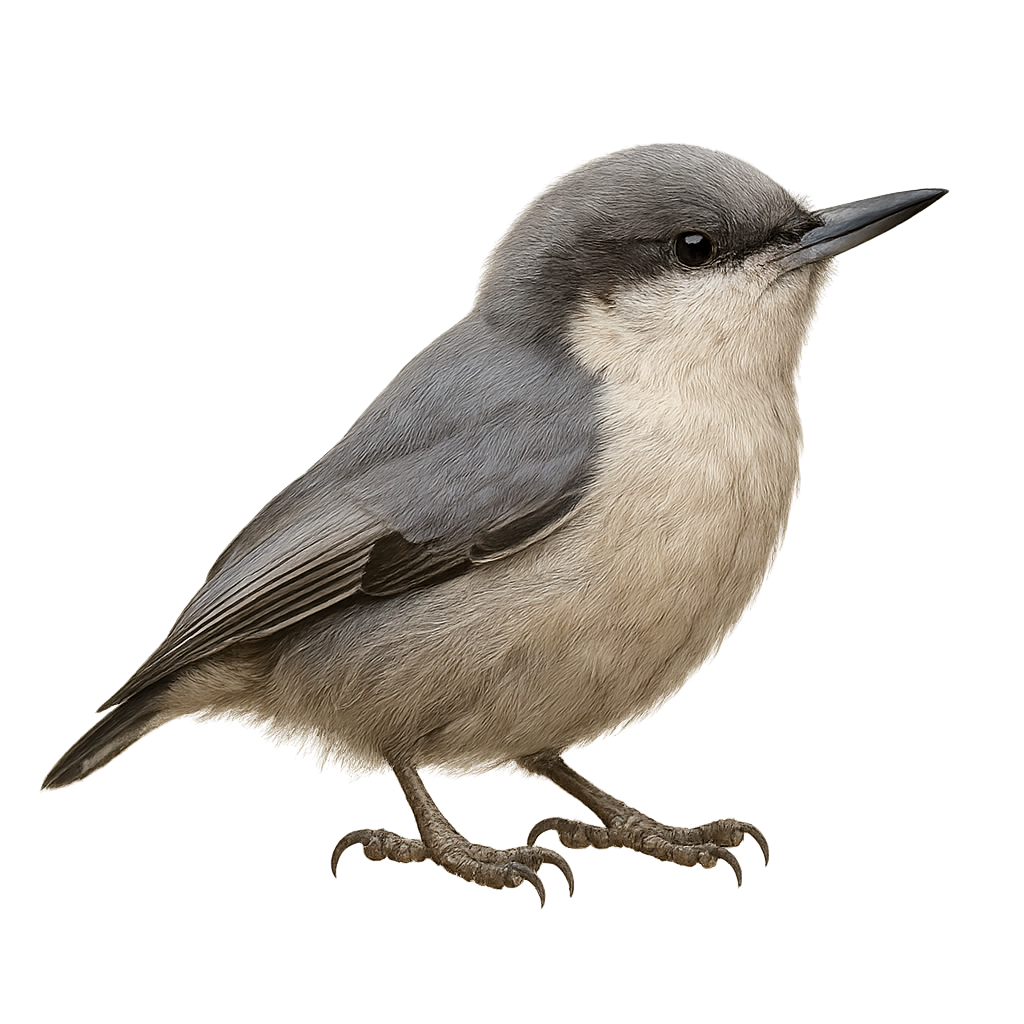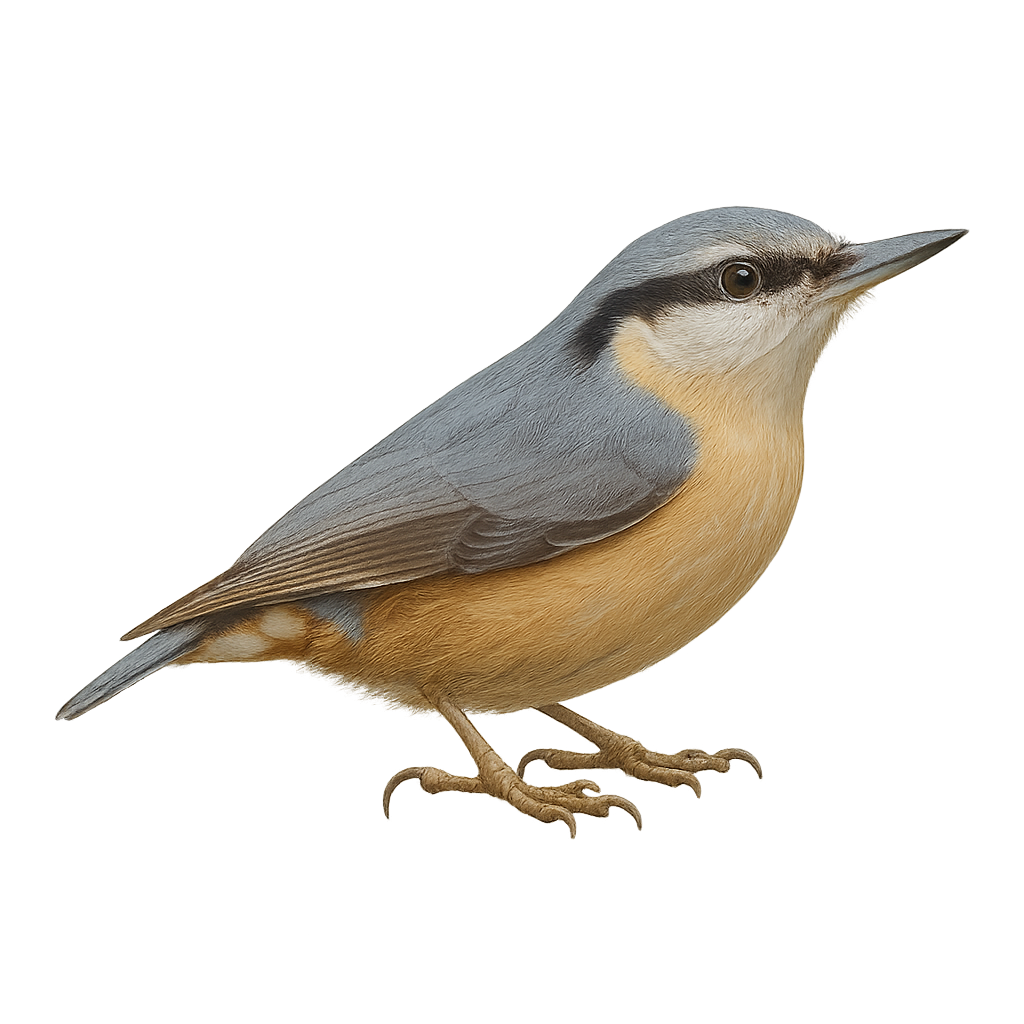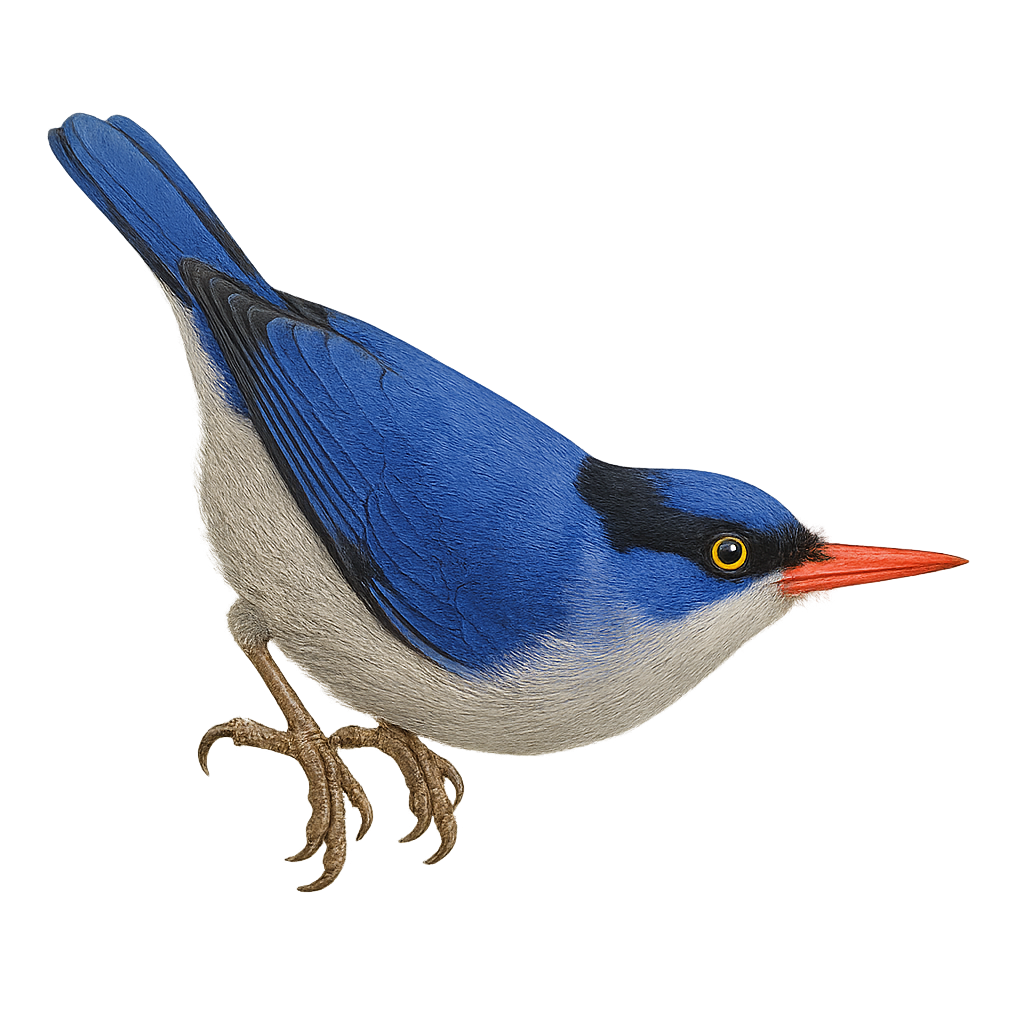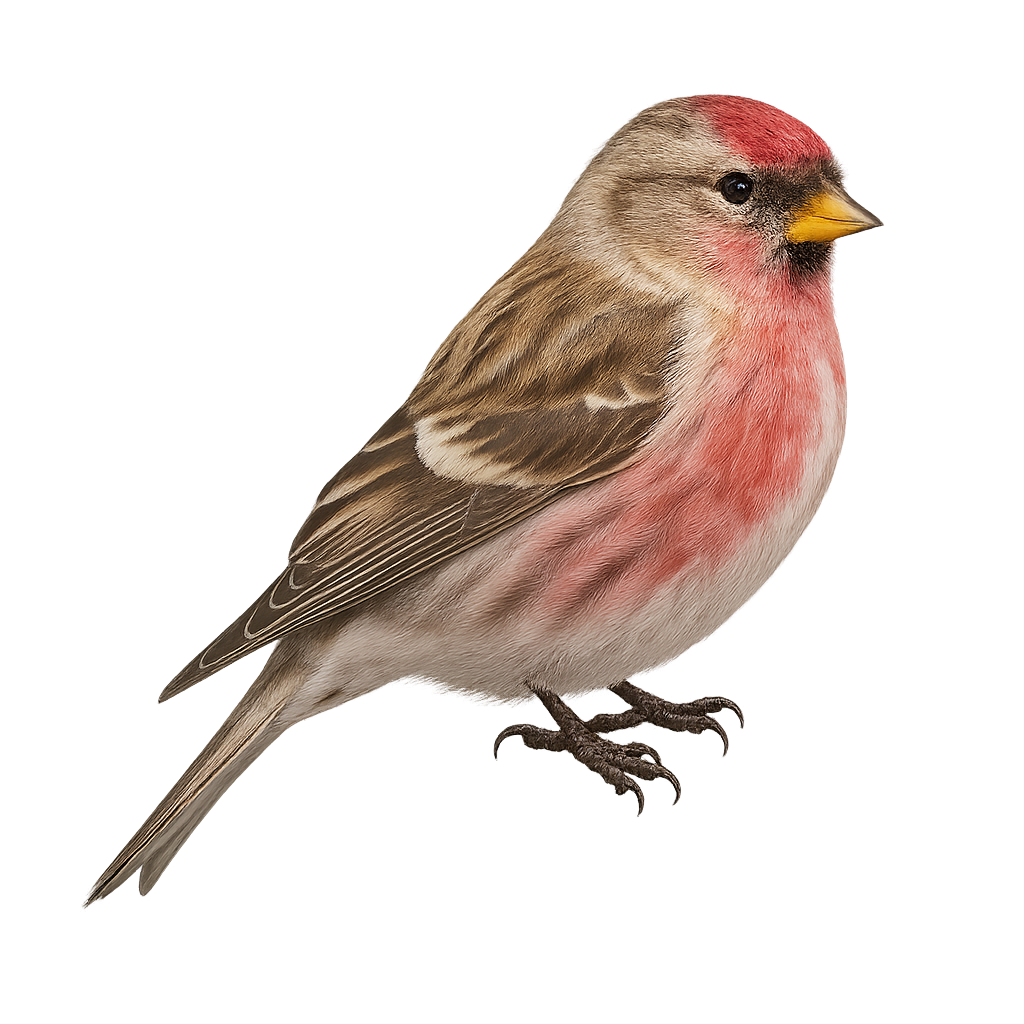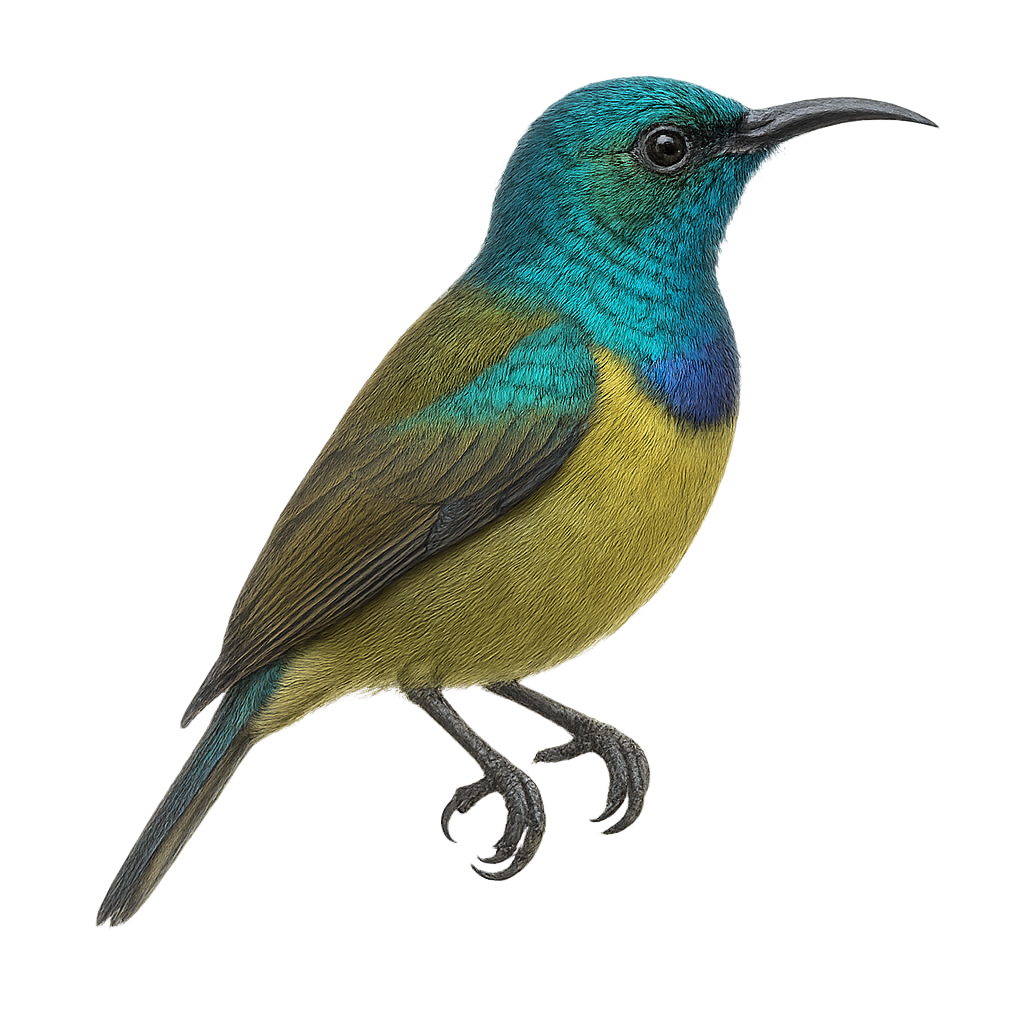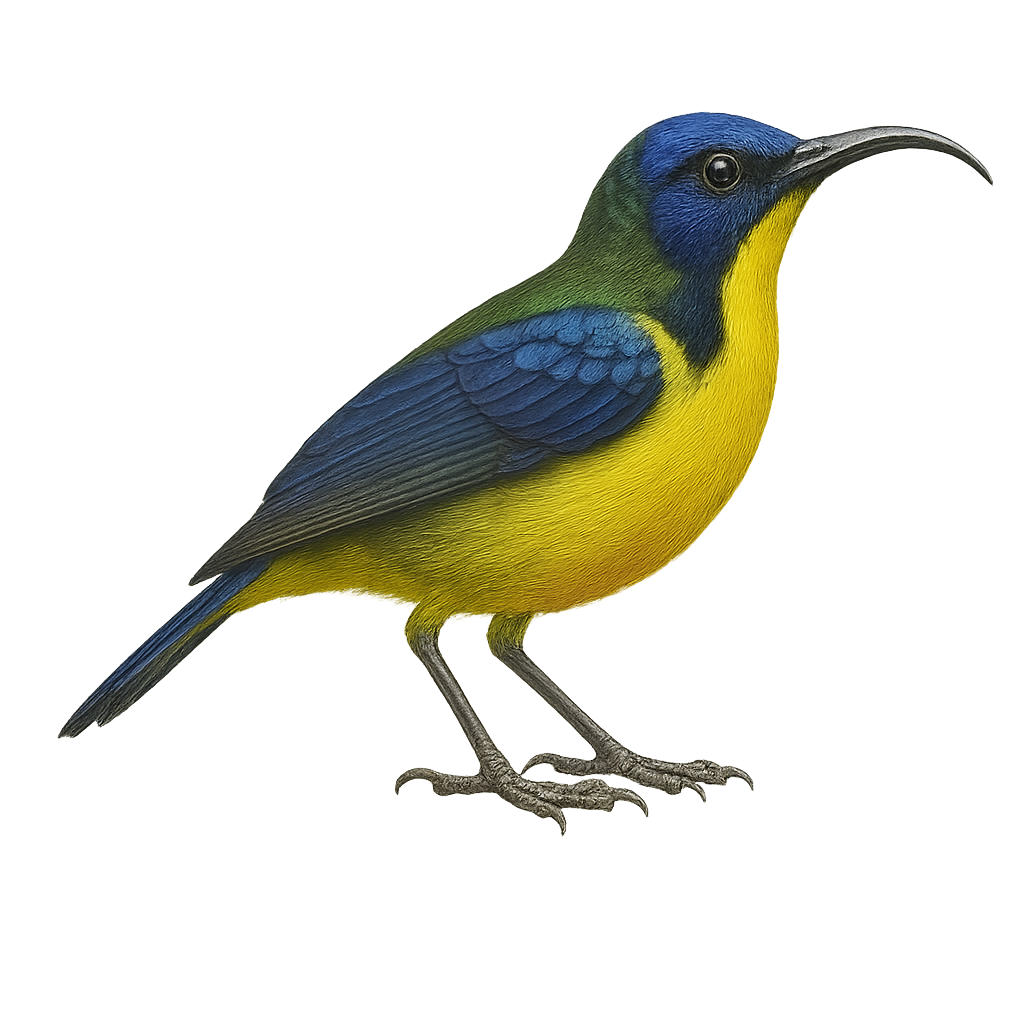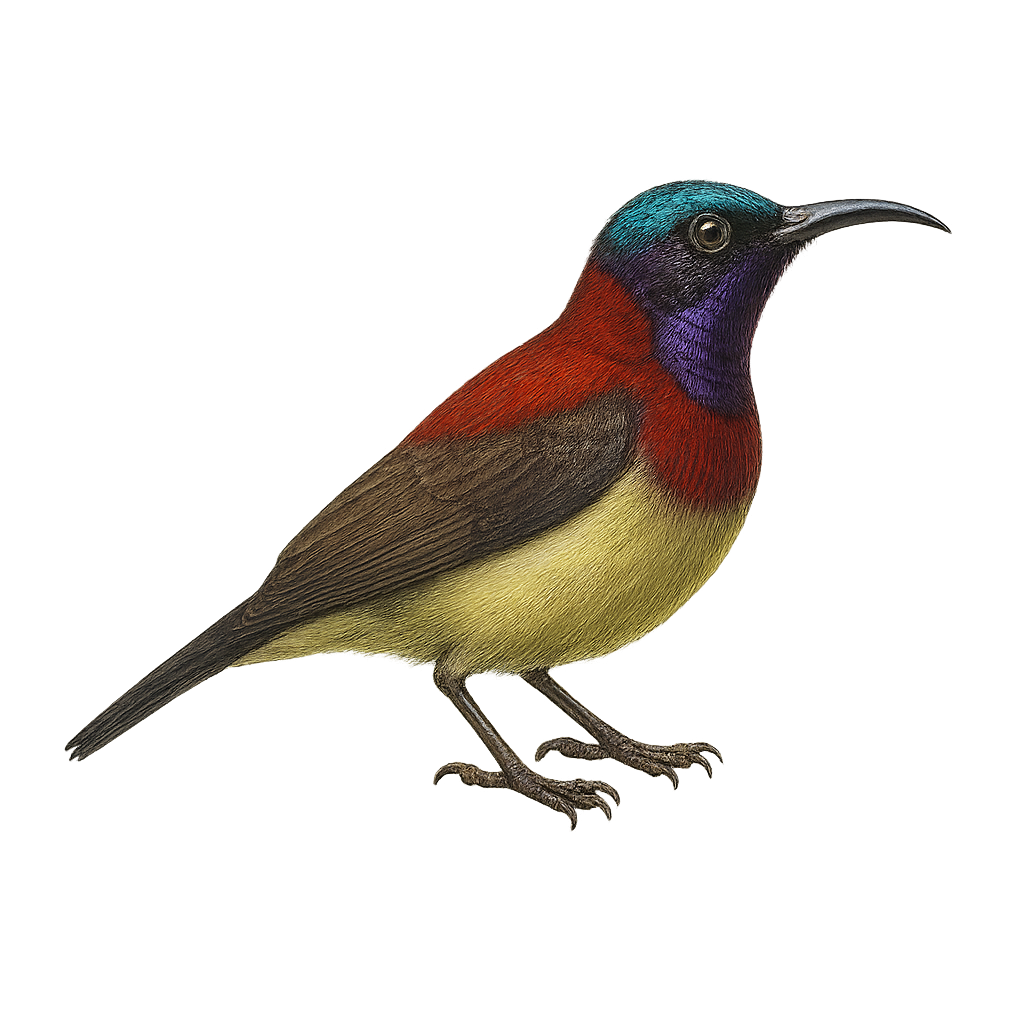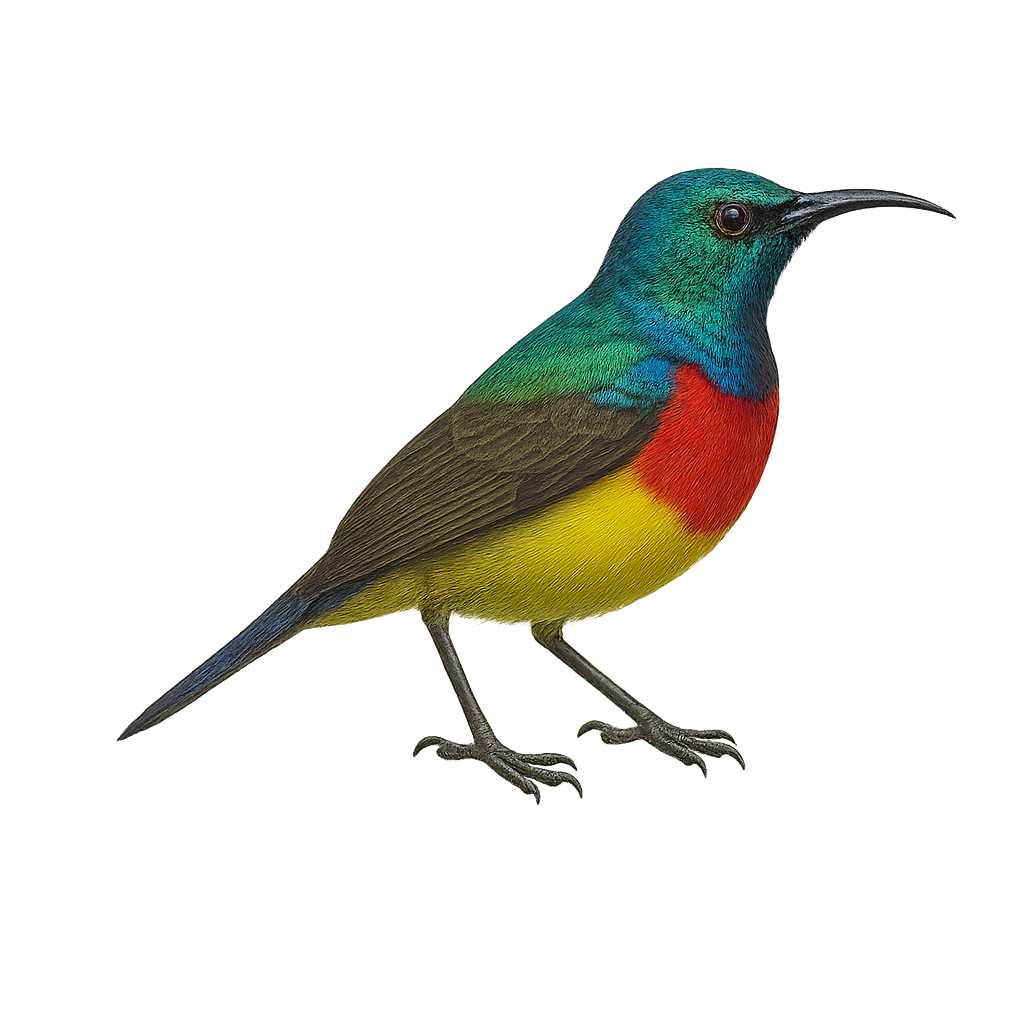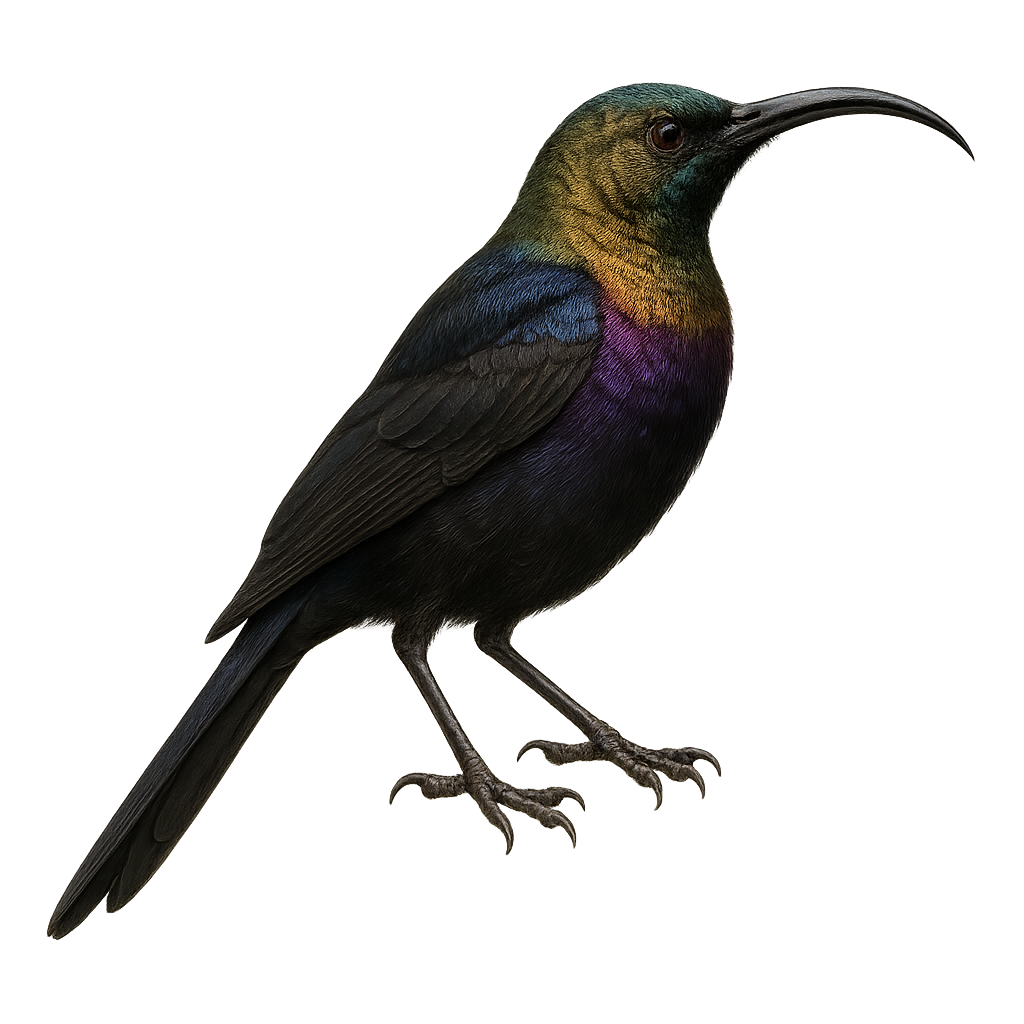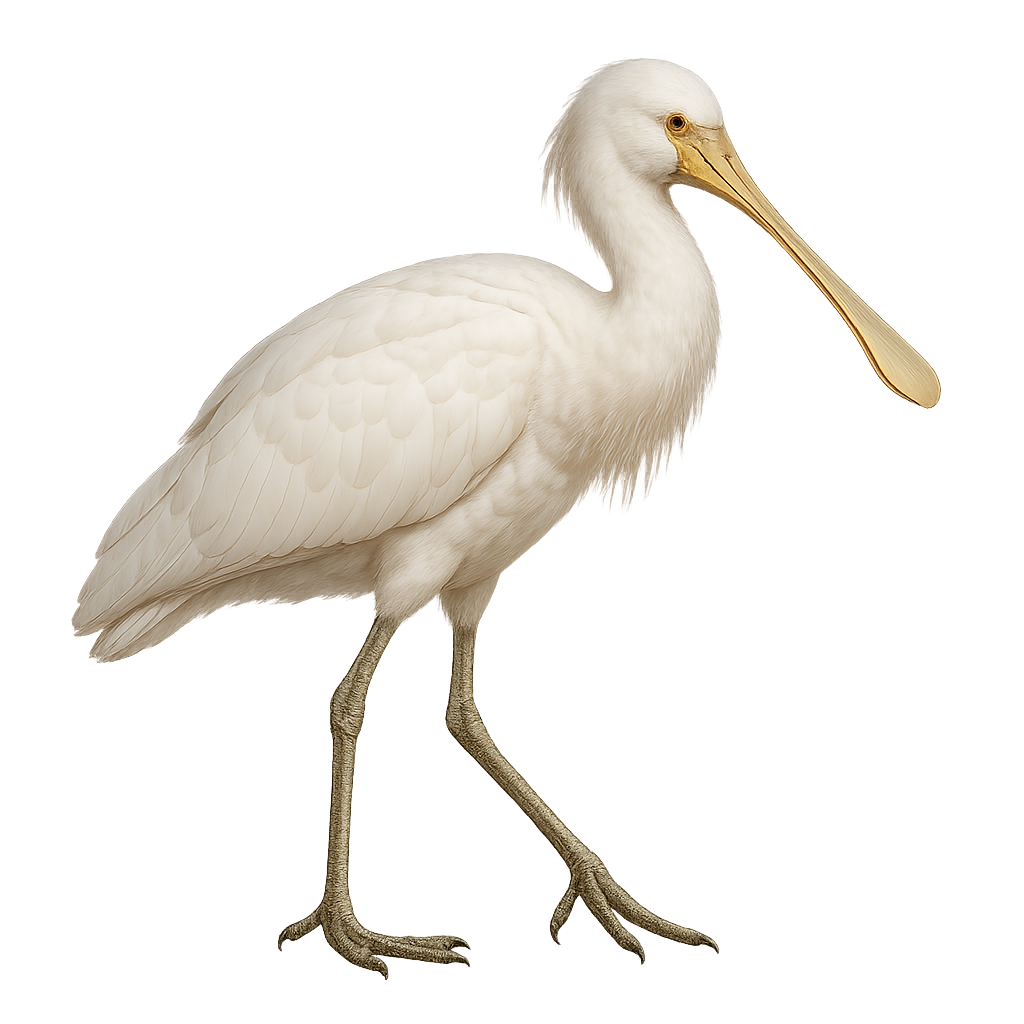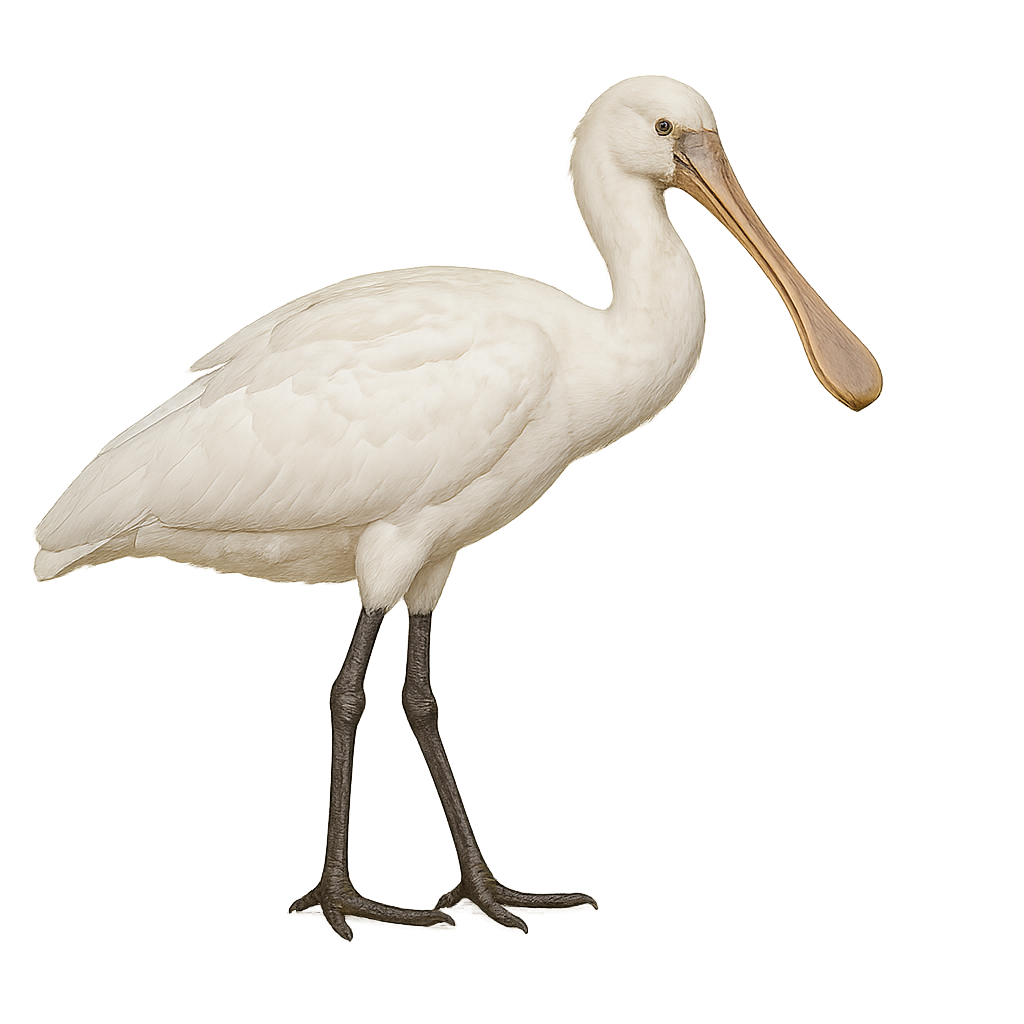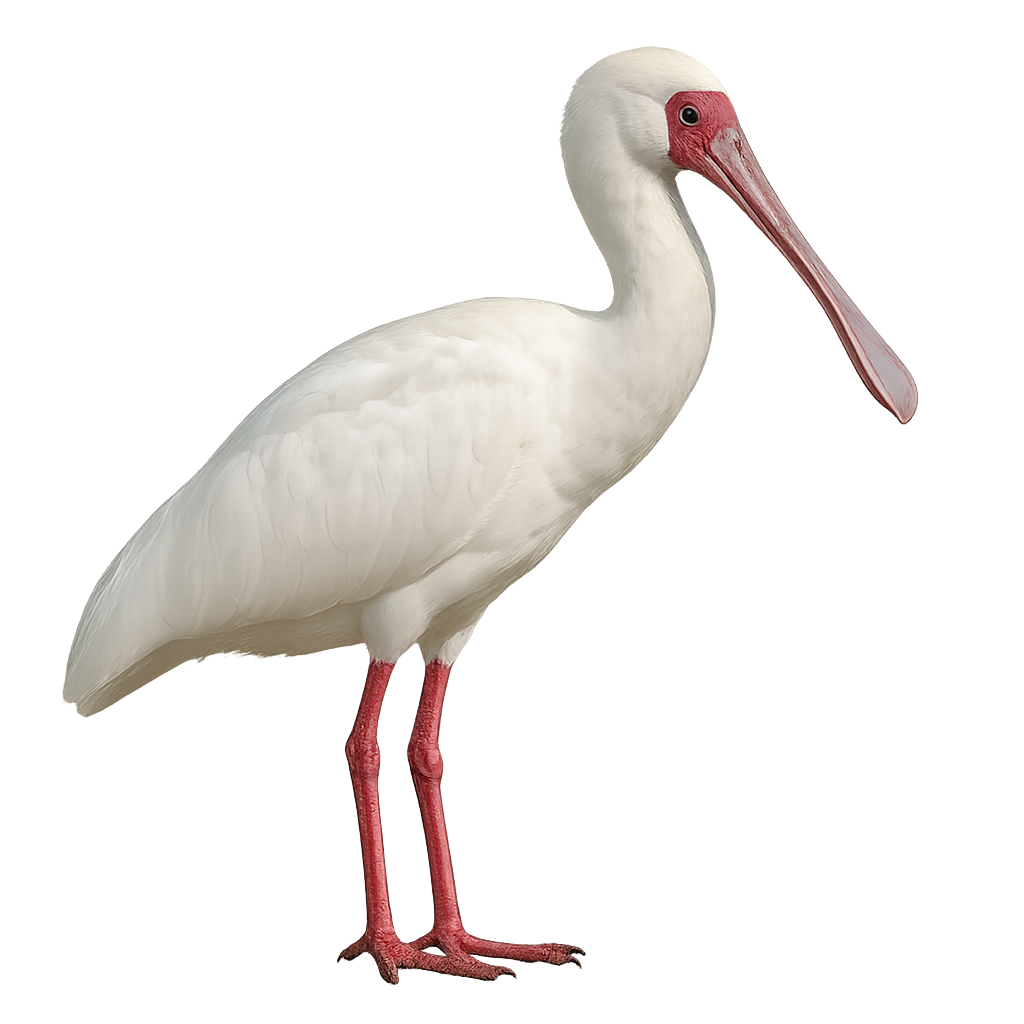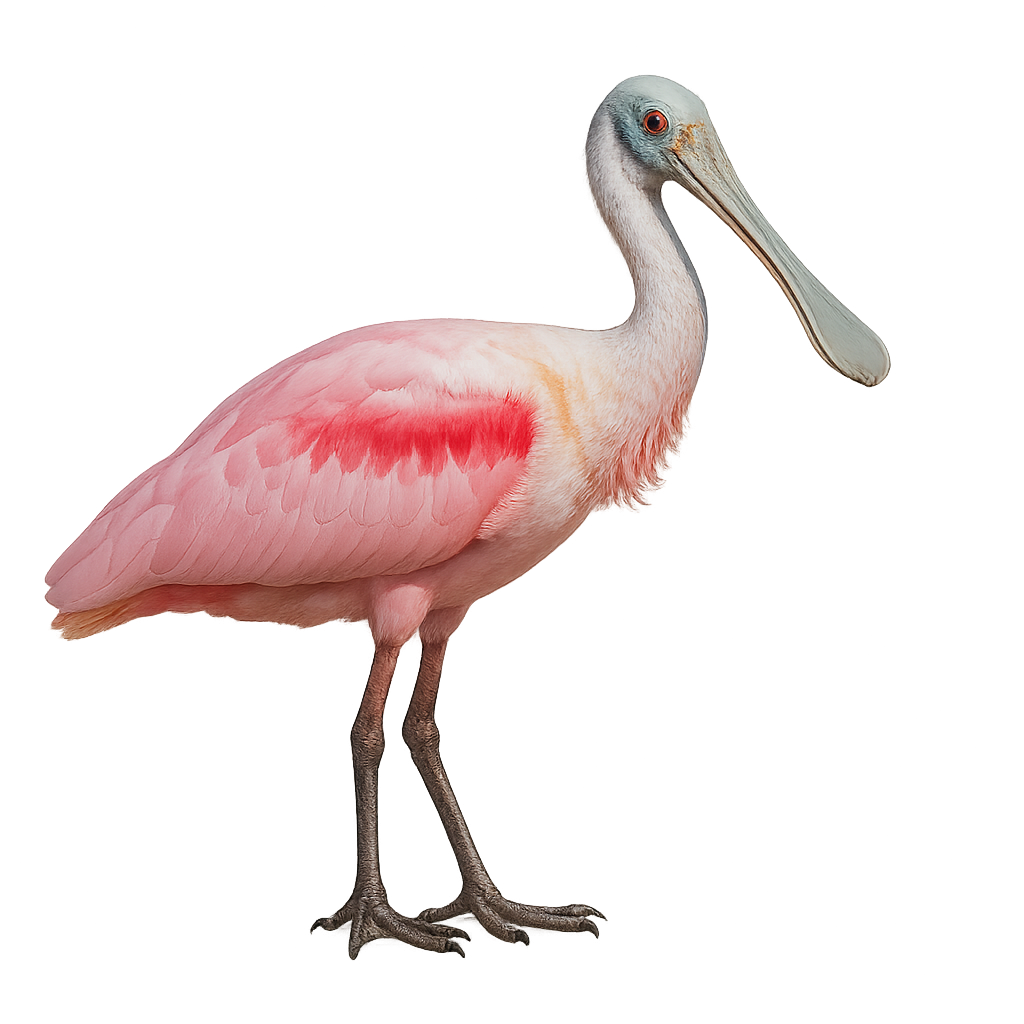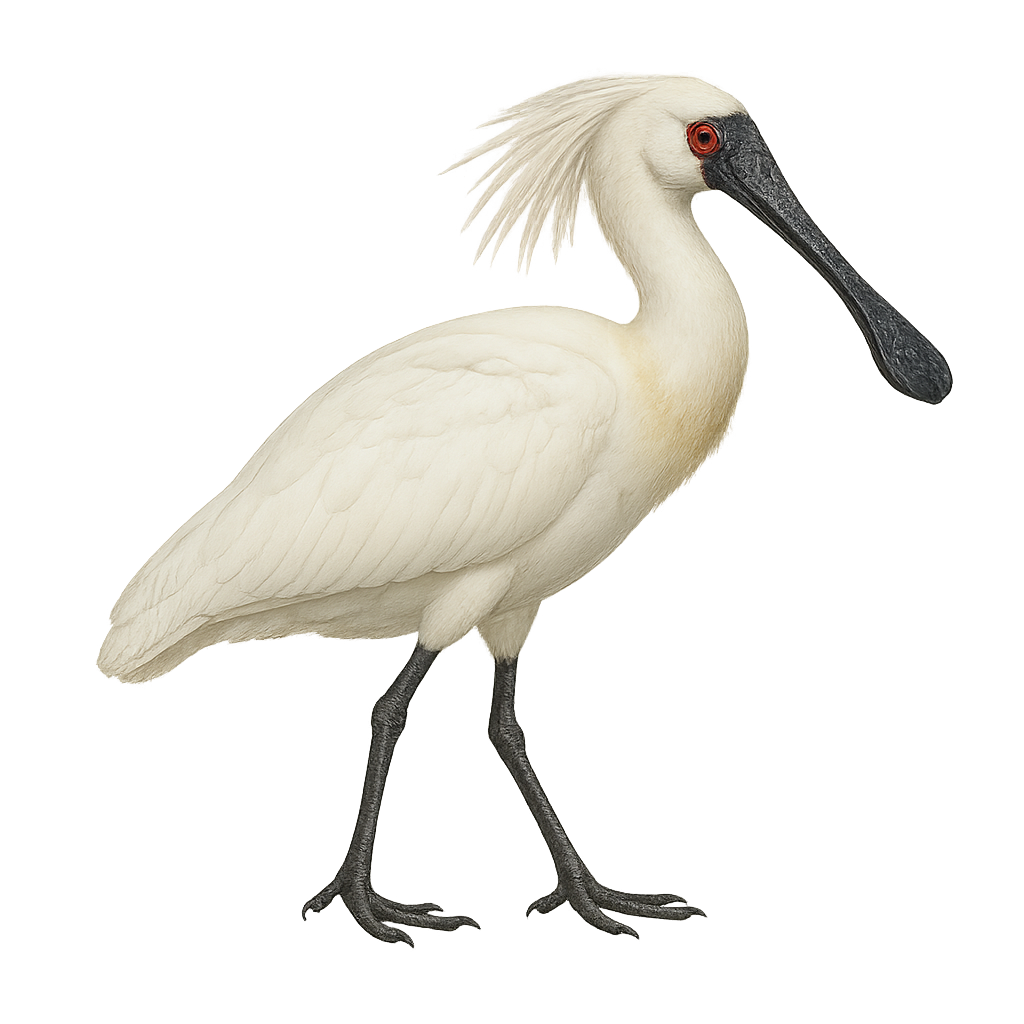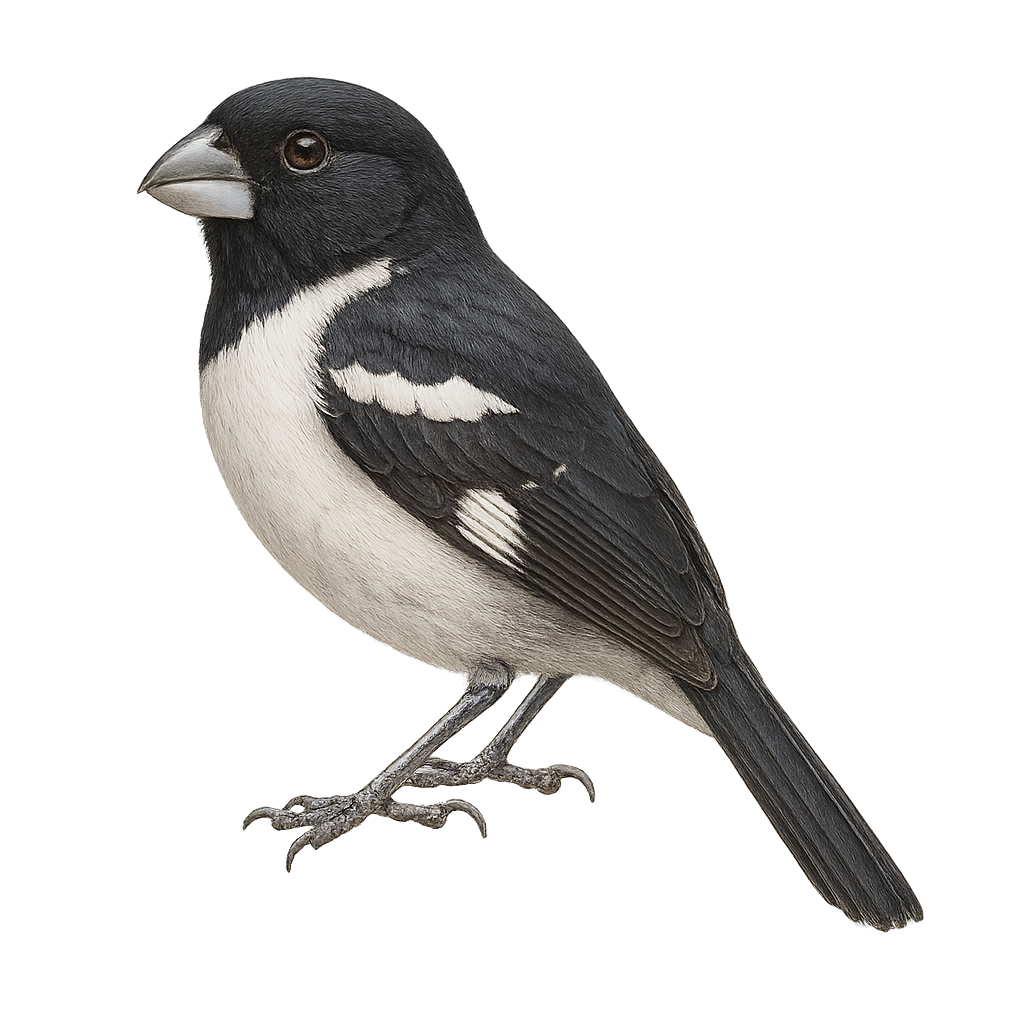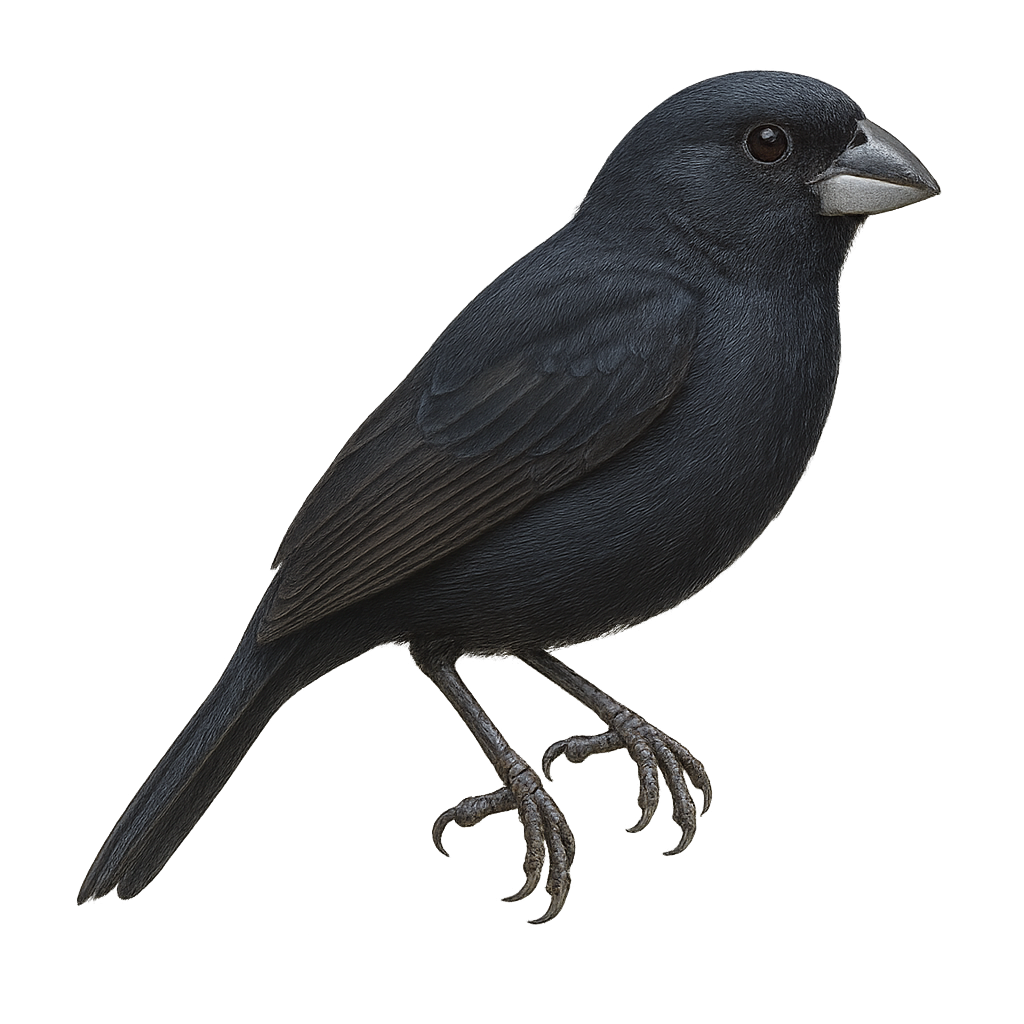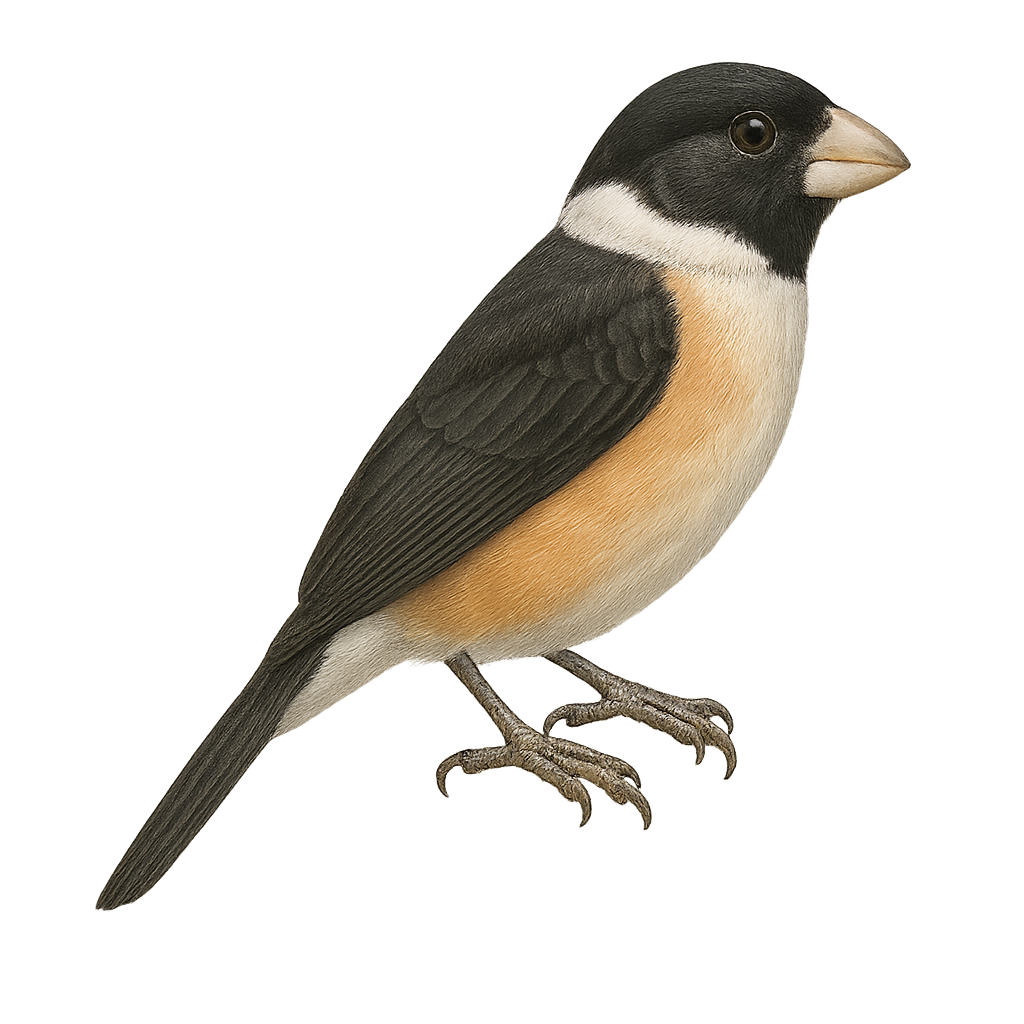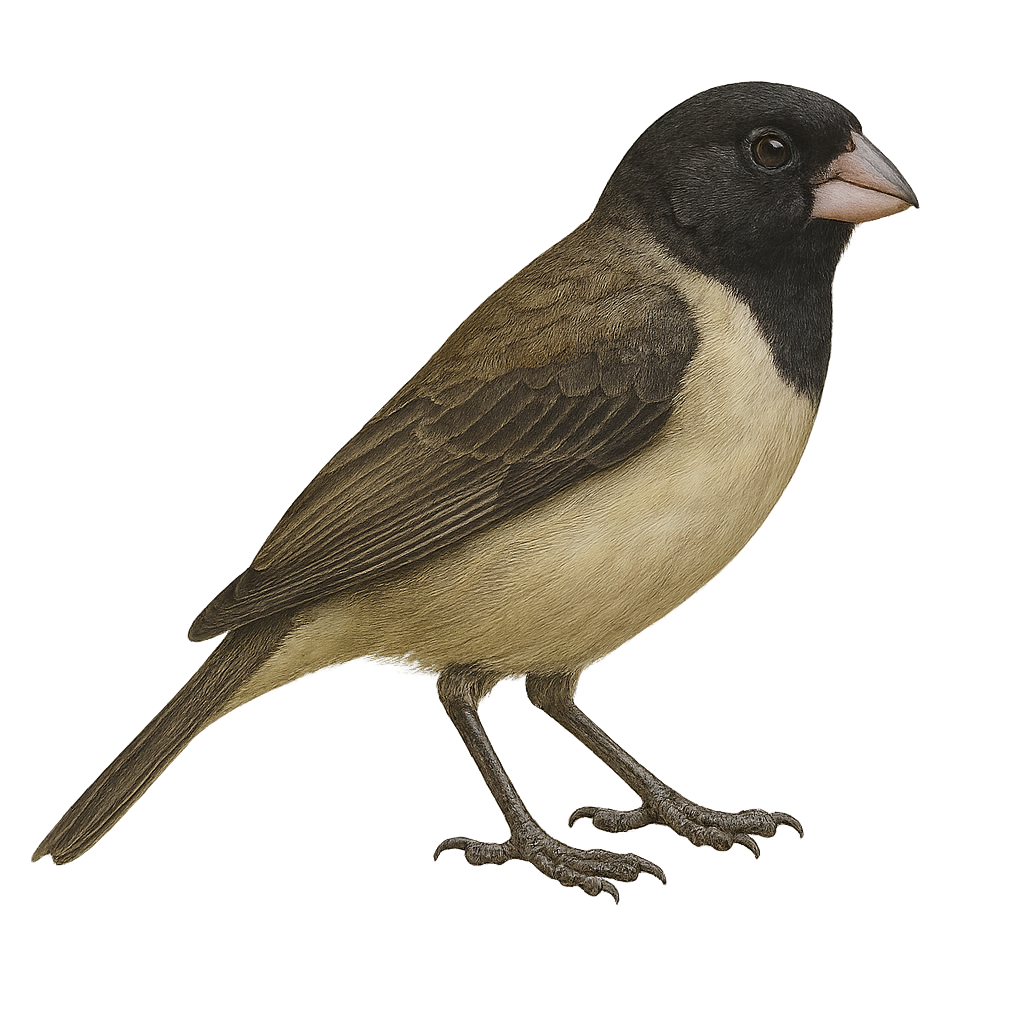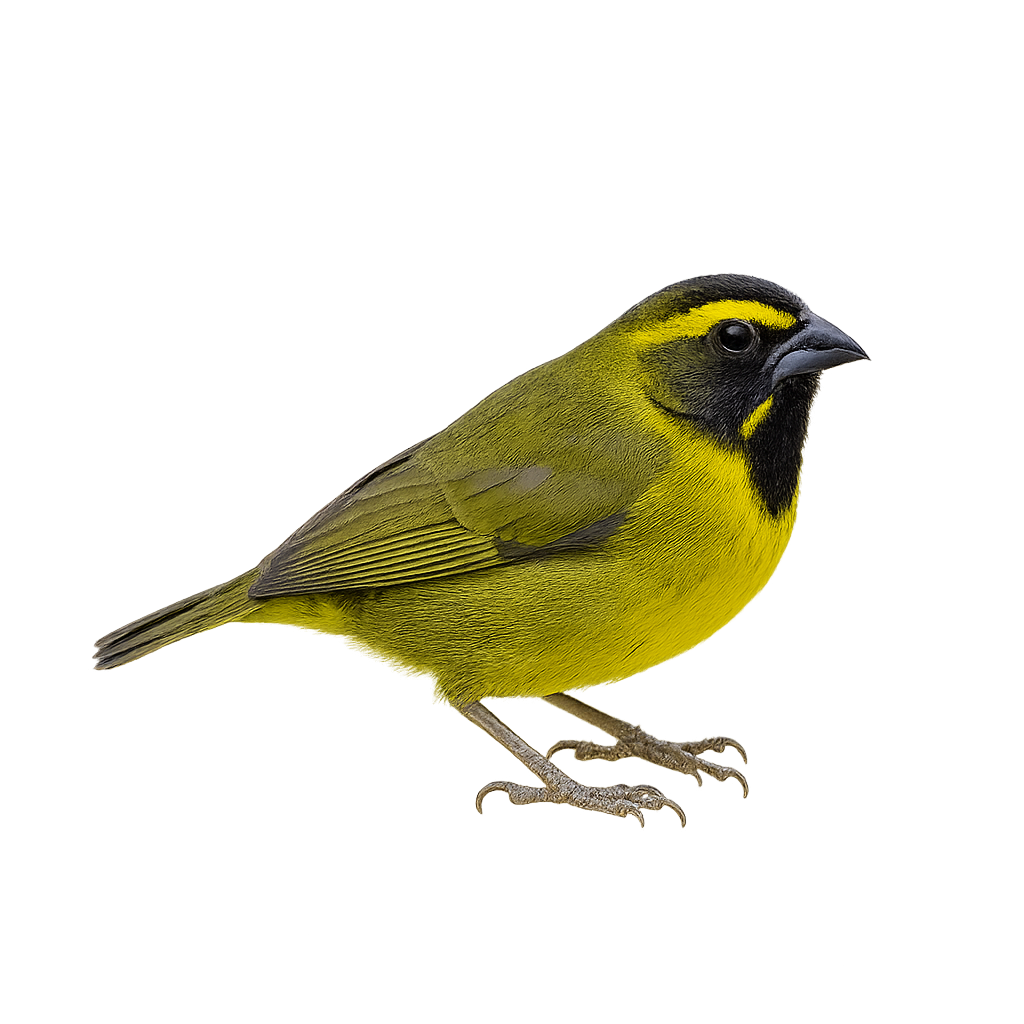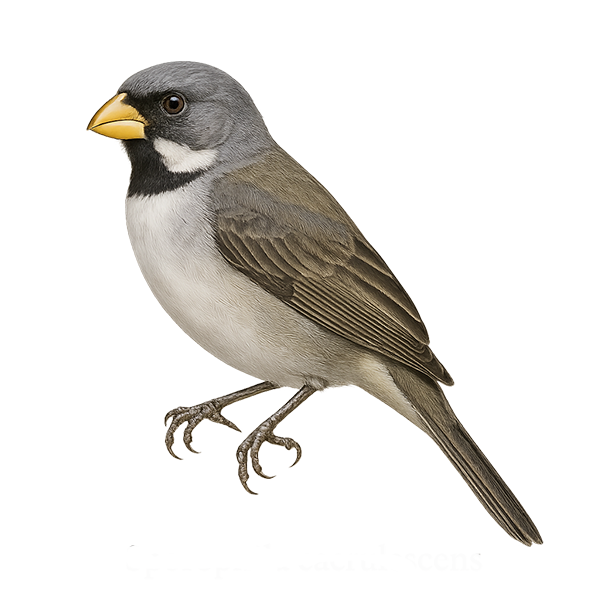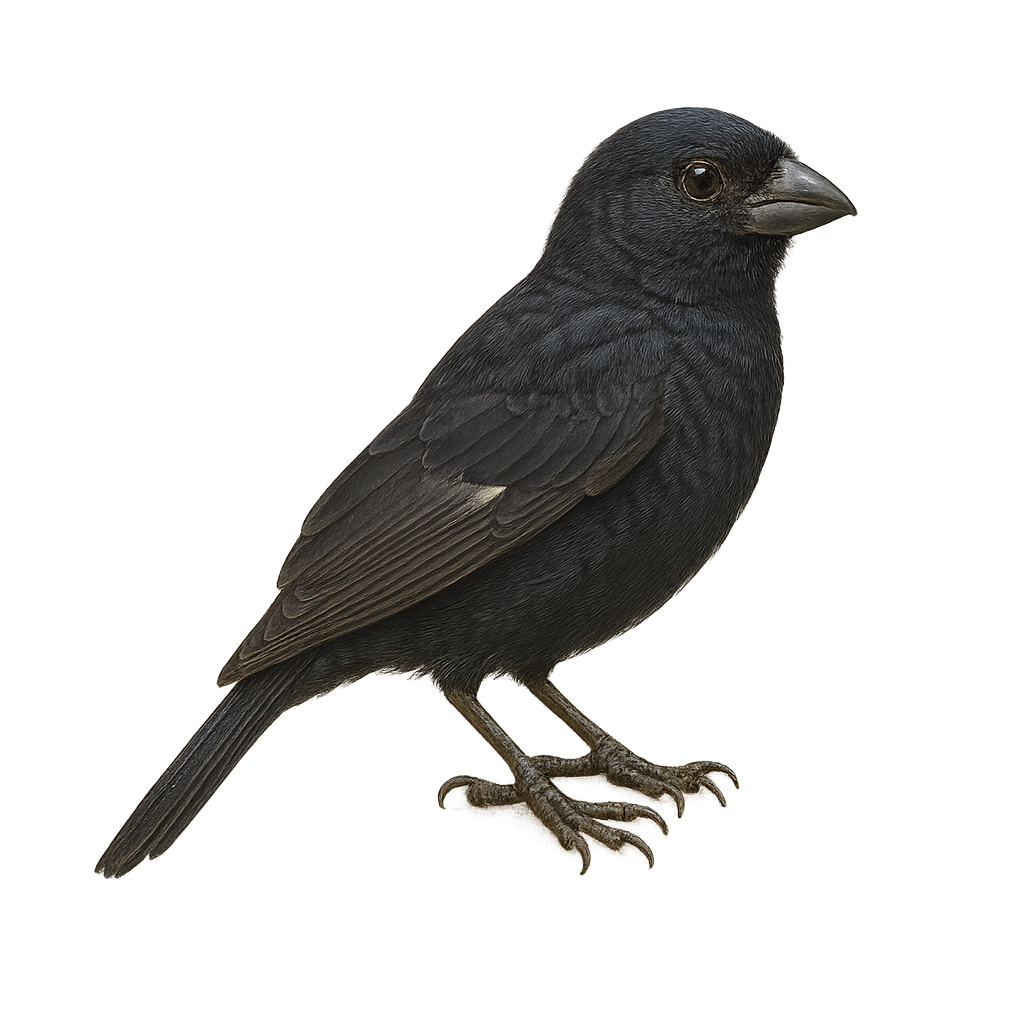The pygmy nuthatch (Sitta pygmaea) is a small forest passerine, measuring 9–11 cm in length and weighing 8–12 g, identified by its slate-blue dorsal plumage, brighter blue crown, and contrasting white throat. Endemic to western North America’s ponderosa and Jeffrey pine forests, it forages for insects, seeds, and resin in bark crevices. Highly social, it forms stable family groups year-round and often clings upside-down on trunks and branches. The breeding season runs from 01.04–30.06; it nests in cavities, laying 5–9 eggs incubated for 14–17 days, with hatchlings emerging between 15.04 and 17.07.
The Eurasian nuthatch is a small woodland bird found primarily in mixed and deciduous forests across Europe and Asia. It is easily recognized by its blue-grey and orange plumage, light belly, and distinctive black mask around its eyes. This bird is particularly known for its ability to climb upside down on tree trunks, allowing it to reach areas inaccessible to other birds. It primarily feeds on insects, seeds, and nuts.
The Velvet-fronted Nuthatch is a small, colorful bird, primarily blue with a distinctive yellow cap. It is often seen in the dense tropical forests of Southeast Asia, where it moves nimbly along trunks and branches in search of insects and seeds. Its social behavior is notable, as it often travels in small groups, emitting high-pitched calls to communicate. Although primarily arboreal, it occasionally descends to the ground to forage. Its ability to climb headfirst down trees is characteristic of nuthatches. The Velvet-fronted Nuthatch is a resilient bird, capable of adapting to various forest habitats, but remains vulnerable to deforestation.
The Plain Xenops is a small bird from the Furnariidae family, primarily found in the tropical forests of Central and South America. It measures about 12 cm in length and is characterized by its brown plumage with lighter shades on the belly. Its slightly curved beak allows it to probe tree bark for insects, its main food source. This bird is often seen climbing tree trunks, much like woodpeckers. Although discreet, its high-pitched, repetitive song can be heard through the dense canopy. The Plain Xenops plays an important role in the ecosystem by helping control insect populations.
The Common Redpoll, Acanthis flammea, is a small finch in the Fringillidae family. It is easily identified by its brown streaked plumage and bright red cap. Males often have a rosy breast, while females are duller. This small bird is well adapted to cold climates and is primarily found in boreal forests and arctic regions. It mainly feeds on seeds but also consumes insects in summer. The Common Redpoll is a gregarious bird, often seen in flocks, especially in winter. It is known for its irregular migrations, influenced by food availability.
The Green Sunbird, or Anthreptes rectirostris, is a small, colorful bird from the Nectariniidae family, primarily found in West and Central Africa. It is distinguished by its vibrant plumage, often metallic green in males, and its slender, straight bill adapted for nectar feeding. This nectarivore is commonly seen in tropical rainforests, forest edges, and occasionally in gardens. Its song is a mix of trills and melodious chirps. Although primarily nectarivorous, it supplements its diet with insects, especially during the breeding season. The Green Sunbird plays a crucial role in plant pollination, thus contributing to the biodiversity of its habitat.
The Red-chested Sunbird, or Cinnyris erythrocercus, is a small, colorful bird belonging to the Nectariniidae family. It is primarily found in East Africa, particularly in Uganda, Kenya, and Tanzania. This sunbird is distinguished by its vibrant plumage: males have a bright red throat and chest, contrasting with a metallic green back and white belly. Females, on the other hand, display more subdued tones with olive-brown plumage. These birds are often seen in gardens, open forests, and savannas, where they primarily feed on nectar, but also insects. Their flight is fast and direct, and they are known for their melodious and complex song.
The Collared Sunbird, a small bird with dazzling plumage, is a gem of African forests. Its metallic green back contrasts with its bright yellow belly, and its distinctive collar adds a touch of elegance. Measuring about 10 cm, it is agile and fast, moving from flower to flower to feed on nectar, supplemented by insects. Its thin, curved beak is perfectly adapted to its diet. This sunbird is often seen in pairs or small groups, emitting melodious songs. It primarily inhabits humid tropical forests but also adapts to gardens and plantations. Although generally not very shy, it remains cautious of threats.
The Scarlet-chested Sunbird, Chalcomitra senegalensis, is a striking bird from the Nectariniidae family. Males are easily identified by their vivid red chest and metallic green back, while females are more subdued with brown and gray tones. They primarily feed on nectar but also consume insects, especially during breeding season. Found in diverse habitats from savannas to open forests, they often stay near water sources. Known for their swift flight and melodious songs, these birds are a delight to observe. Although their conservation status is currently of concern, they remain relatively common within their range.
The Variable Sunbird, or Cinnyris venustus, is a small, colorful bird belonging to the Nectariniidae family. It is primarily found in sub-Saharan Africa, where it inhabits various environments such as savannas, open forests, and gardens. This sunbird is recognizable by its vibrant plumage, with metallic green hues on its back and yellow shades on its belly. Males often display brighter colors than females. They primarily feed on nectar but also consume insects to supplement their diet. These birds are known for their fast and agile flight, allowing them to move easily between flowers.
The Purple Sunbird, or Cinnyris asiaticus, is a small bird found mainly in South Asia. Known for its vibrant plumage, especially in males, it displays metallic colors ranging from blue to violet. The female, on the other hand, has more subdued tones, with an olive-brown plumage. These birds are often seen in gardens, open forests, and urban areas, where they primarily feed on nectar, but also insects. Their slender, curved beak is perfectly adapted for extracting nectar from flowers. The Purple Sunbird is a very active bird, often seen flitting from flower to flower, playing a crucial role in plant pollination.
The Lina's Sunbird, scientifically known as Aethopyga linaraborae, is a bird from the Nectariniidae family, endemic to the Philippines. This small bird, measuring about 10 cm in length, is renowned for its vibrant plumage, displaying a spectrum of colors from red to metallic green. Males feature a striking red throat and a shiny green back, while females are more subdued with olive-green hues. They primarily inhabit tropical rainforests and mountainous regions. Their diet mainly consists of nectar, but they also consume insects to supplement their nutrition. Lina's Sunbird plays a vital role in the pollination of local plants.
The Preuss's Sunbird is a small, brightly colored bird primarily found in the humid tropical forests of Central Africa. It is recognizable by its vibrant plumage, with metallic green and blue hues on its back and head, and a bright red chest. Males and females exhibit marked sexual dimorphism, with females having duller colors. This nectarivore primarily feeds on nectar but also consumes insects to supplement its diet. It plays a crucial role in the pollination of tropical plants. The Preuss's Sunbird is an active and agile bird, often seen darting quickly from flower to flower.
The Crimson Sunbird, Leptocoma minima, is a small, vibrantly colored bird belonging to the Nectariniidae family. It is primarily found in tropical and subtropical moist forests, as well as in shrublands and gardens. This bird is distinguished by its striking plumage, featuring metallic shades of red, green, and blue. Males often display brighter colors than females, who are generally duller. The Crimson Sunbird primarily feeds on nectar but also consumes insects to supplement its diet. It plays a crucial role in pollinating flowers, thus contributing to the biodiversity of its habitat.
The Regal Sunbird, Cinnyris regius, is a small African hummingbird-like bird known for its vibrant colors. The male displays a dazzling plumage with shades of metallic green, blue, and red, while the female is more subdued with brown and green tones. This nectarivore is commonly found in tropical and subtropical forests, feeding primarily on nectar, but also on insects and spiders. Its slender, curved beak is perfectly adapted to reach the nectar of flowers. The Regal Sunbird is an active and agile bird, often seen flitting from flower to flower, playing a crucial role in the pollination of plants in its habitat.
The Tacazze Sunbird is a bird from the Nectariniidae family, mainly found in the mountainous regions of East Africa. It is easily recognizable by its iridescent plumage, which ranges from metallic green to deep purple, depending on the light angle. Males display brighter colors than females, who are generally duller. This bird primarily feeds on nectar but supplements its diet with insects and spiders. It is often seen in gardens, forests, and wooded areas, using its long curved beak to access flowers. The Tacazze Sunbird is a diurnal bird, active mainly in the morning and late afternoon.
The Yellow-billed Spoonbill, Platalea flavipes, is a medium-sized aquatic bird known for its long, flat, yellow bill. It has a striking white plumage, sometimes tinged with pink during the breeding season. This bird is primarily found in Australia, where it inhabits wetlands, marshes, and lake edges. The Yellow-billed Spoonbill feeds mainly on small fish, aquatic insects, and crustaceans, which it captures by sweeping its bill through the water. It is often seen in small groups but can also be solitary. Although its habitat is threatened by wetland degradation, it is currently classified as of least concern by the IUCN.
The Eurasian Spoonbill is a medium-sized bird primarily found in wetlands across Europe, Asia, and North Africa. It measures about 80 to 95 cm in length, with a wingspan of 120 to 130 cm, and weighs between 1.5 and 2.5 kg. Its plumage is predominantly white, with a long spoon-shaped bill that allows it to forage in shallow waters, primarily feeding on aquatic invertebrates, small fish, and crustaceans. The Eurasian Spoonbill is often seen in groups, feeding in marshes, rice fields, or estuaries. It is migratory, moving to warmer regions during the winter. While its population remains stable in certain areas, the Eurasian Spoonbill faces threats related to habitat loss, water pollution, and urbanization.
The African Spoonbill, or Platalea alba, is a striking wading bird known for its spoon-shaped bill, which it uses to sift through water for food. It boasts a bright white plumage that contrasts with its reddish legs and bill. This bird is primarily found in the wetlands of sub-Saharan Africa, frequenting marshes, lakes, and rivers. The African Spoonbill is a gregarious bird, often seen in groups, and feeds mainly on small fish, crustaceans, and aquatic insects. Its breeding season varies by region but is generally tied to the rainy season when food resources are plentiful.
The Roseate Spoonbill is a large wading bird with striking pink plumage, measuring between 71 and 86 cm in length and a wingspan of 120 to 135 cm. Its long, spatula-shaped bill is used to sweep shallow waters side to side in search of prey. Adults have a greenish bare head, white neck and back, and vivid pink wings with carmine highlights. Juveniles are paler, with a feathered head and lighter pink plumage. This species feeds primarily on small fish, crustaceans, and aquatic insects, captured by filtering mud in wetlands. It inhabits coastal marshes, mangroves, lagoons, and estuaries from the southern United States to South America. Although listed as Least Concern by the IUCN, the Roseate Spoonbill remains vulnerable to habitat degradation, particularly due to pollution and loss of wetlands.
The Royal Spoonbill, Platalea regia, is an elegant waterbird known for its pristine white plumage and distinctive spoon-shaped bill. It primarily inhabits wetlands in Australia, New Zealand, and some Pacific islands. This bird feeds mainly on small fish, crustaceans, and aquatic insects, which it captures by sweeping its bill through the water. The Royal Spoonbill is often seen in small groups, especially during the breeding season. It builds its nest in trees or shrubs near water. Although its conservation status is currently "Least Concern," habitat destruction remains a potential threat.
The Chestnut-bellied Seedeater, or Sporophila bouvreuil, is a small passerine bird belonging to the Thraupidae family. This seedeater is primarily found in South America, particularly in Brazil, Bolivia, and Argentina. It is easily recognizable by its distinctive plumage: males have a chestnut-brown belly and chest, contrasting with a dark gray back and head, while females display duller and more uniform tones. These birds typically inhabit open areas such as grasslands and savannas, where they primarily feed on seeds. Their melodious song is often heard during the breeding season, a time when they become more territorial.
The Wing-barred Seedeater, or Sporophila americana, is a small passerine bird belonging to the Thraupidae family. It is primarily found in the Neotropical regions, especially in Central and South America. This bird is characterized by its subtle plumage, often grayish with lighter shades on the belly. Males sometimes display more pronounced patterns, including white wing bars. The Wing-barred Seedeater inhabits various environments, from open forests to agricultural areas, savannas, and marshes. It mainly feeds on seeds but can also consume insects. Its song is melodious yet discreet, often heard at dawn.
The Slate-colored Seedeater, or Sporophila funerea, is a small seed-eating bird found primarily in Central America, particularly in Costa Rica and Panama. Its plumage is mostly slate-colored, with lighter shades on the belly. Males and females exhibit sexual dimorphism, with females having browner tones. This bird prefers open habitats such as grasslands and agricultural areas, where it primarily feeds on seeds. It is often seen in small groups, especially outside the breeding season. Although its song is subtle, it plays an important role in communication between individuals.
The White-collared Seedeater, or Sporophila torqueola, is a small passerine bird belonging to the Thraupidae family. It is primarily found in the tropical and subtropical regions of Central America, particularly in Mexico and Guatemala. This bird is known for its contrasting plumage: males have a distinctive white collar around their necks, while females exhibit more subdued, often brownish tones. The White-collared Seedeater inhabits open areas such as grasslands, cultivated fields, and forest edges. It primarily feeds on seeds but can also consume insects. Its melodious song is often heard at dawn and dusk, making it a favorite among birdwatchers.
The Yellow-bellied Seedeater is a small passerine bird belonging to the Thraupidae family. It is primarily found in Central and South America, inhabiting open areas such as grasslands, cultivated fields, and forest edges. This bird is notable for its contrasting plumage: the male has a brown back, bright yellow belly, and distinctive black throat, while the female displays duller tones. The Yellow-bellied Seedeater is granivorous, mainly feeding on seeds, but it can also consume small insects. Its song is melodious and varied, making it easily identifiable. Although often solitary, it can form small groups outside the breeding season.
The Yellow-faced Grassquit, or Tiaris olivaceus, is a small granivorous bird found mainly in the tropical and subtropical regions of the Americas. It is easily recognizable by its olive-green plumage and bright yellow facial mask, which contrasts with its duller body. This passerine measures about 11 cm in length and weighs between 8 and 10 grams. It primarily inhabits grasslands, savannas, and shrublands, where it feeds on seeds and insects. The Yellow-faced Grassquit is a social bird, often observed in small groups. Its song is a soft and melodious trill, used to mark its territory and attract mates. Although not threatened, deforestation and habitat loss can affect its local populations.
The Double-collared Seedeater is a small passerine bird belonging to the Thraupidae family. It is primarily found in South America, particularly in Brazil, Argentina, Paraguay, and Uruguay. Its plumage is generally gray with lighter shades on the belly and a darker cap. Males and females exhibit sexual dimorphism, with males often displaying brighter colors. This bird inhabits various environments, from open forests to agricultural areas and urban gardens. It primarily feeds on seeds but can also consume insects. The Double-collared Seedeater is known for its melodious song and its ability to adapt to different environments.
The Variable Seedeater, or Sporophila corvina, is a small passerine bird belonging to the Thraupidae family. This charming bird is primarily found in Central America, from southern Mexico to western Panama. It is easily recognizable by its distinctive black and white plumage, with a black belly in males, while females display more brownish hues. This passerine frequents various habitats, from tropical forests to open agricultural areas. It is often seen feeding on seeds and insects, making it an important player in seed dispersal. Although generally tolerant of human presence, it can be suspicious in disturbed environments.
The Crested Auklet, Aethia cristatella, is a small seabird belonging to the Alcidae family, easily identifiable by its distinctive crest and dark gray plumage. It measures about 25 cm in length and weighs between 250 and 300 grams. Its bright orange bill and white-ringed eyes add to its unique appearance. This bird is primarily found in the subarctic regions of the North Pacific, particularly around the Aleutian Islands and the coasts of eastern Russia. It feeds mainly on zooplankton, small crustaceans, and fish. The Crested Auklet is an excellent diver, capable of descending several tens of meters underwater to hunt. It nests in dense colonies on rocky cliffs, laying a single egg per season.


